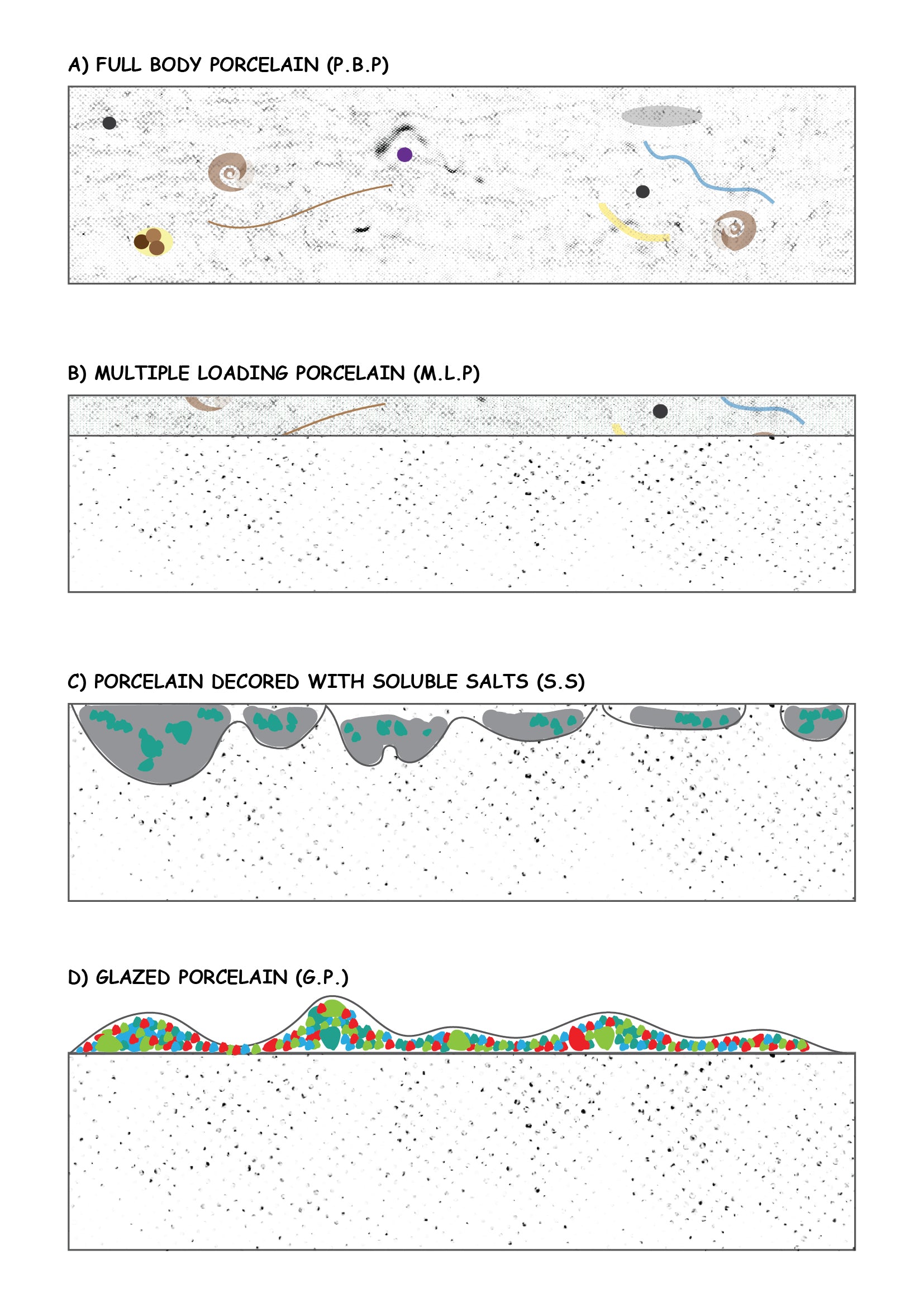Your Cart is Empty
Rockville, MD - July 2016 - Wood-look tile hit the market over a decade ago, and has only been increasing in popularity since. True wood floors are so warm and welcoming, but can’t handle humidity, water, pets, and kids like tile can. So, when wood-look tile was first manufactured, it was the best of both worlds! When you’re selecting a tile that looks like wood, there are a few things to look for if you want to make sure you select the best wood replica for your design.

Below are 3 of the 100 examples of the faces within the Wood Replica collection (color: digue beige).
See more Wood Replica here.
There are several different types of porcelain and it's quickly become one of the most popular options out there. In fact, it's one of the most used bases for wood-look tiles. (To understand the difference between a red clay, white clay, and porcelain tile, there is a document that lays out some specifications on our website here.)
However, a high level porcelain tile has a much higher breakage point which is why it is very desirable. If you drop something heavy on porcelain, it’s not the porcelain you have to worry about! In addition to breakage rating, there is also a rating that the Porcelain Enamel Institute came out with called PEI rating (abrasion test) which is rated from 1 (most easily scratched) to 5 (most scratch resistant). Typically for a residential floor you would want something with a PEI 3 or more. In an ideal world, you would have a 4 or 5 for commercial traffic.
Beware of companies advertising tile as porcelain when it is actually a white body ceramic. It's unethical, but it does happen. It is important to watch handling of the material. There may be several broken pieces within a box during transportation due to the length of the porcelain tiles. All tile is more durable after it is installed versus as loose pieces, therefore they still needs to be handled with care until installed.

Getting tile that looks like wood relies heavily on the graphics. Just as with paper printing capability there is high resolution and low resolution printing. All the good quality wood-look tiles will use High Definition inkjet technology. Without this high resolution printing, you will see some more pixels in the graphic on the tile, and it tends to be blurry. Second to HD printing, there is Roto Printing, which is produced with a roller system. These tiles tend to be the same repeated image every piece. For example, Wood Replica and Estonia are produced using digital technology with 4 colors at 400 DPI resolution. The file is prepared by scanning the original material (ie: a piece of real wood).
Larger size tiles are more difficult to manufacture, so when wood-looks were first made, they were 6” x 24”. Now the manufacturing capabilities have so advanced that they can make planks all the way up to 72” long or more. In addition to this increased length to give a natural wood look, some collections offer variable sizes within the collection. For example, Wood Replica is available in modular pattern with 12 different sizes within a single box of tile.
We hope you come to enjoy Wood look porcelains as much as we have over the years. It's perfect for any lower level project instead of wood, or particularly for beach houses or houses by bodies of water- both situations can make real wood warp due to water leaking. Wood look porcelain solves this problem, and keeps the same beautiful image.
For more Wood-Look tiles from Architessa, see any of our wood-look lines below:
